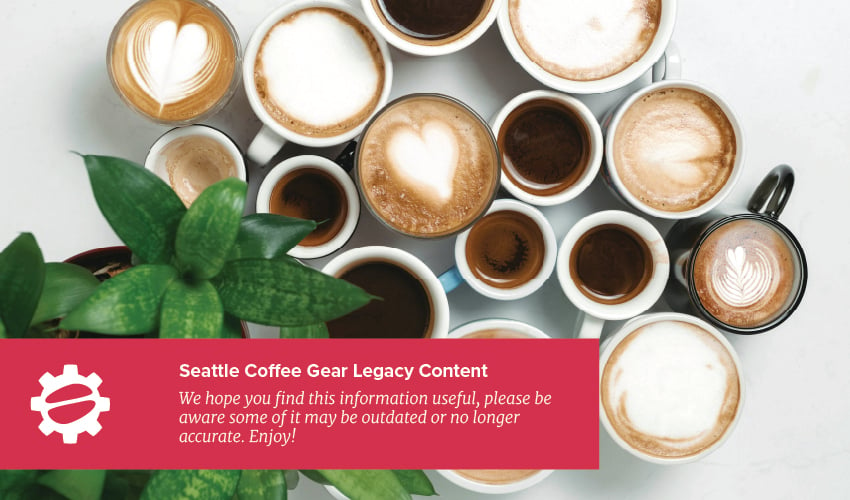Continuing on our tour of local roasters, we recently visited Zoka Coffee in Ballard, Washington. While we were at the roastry, we were lucky enough to have our friend David brew up some Zoka coffee on a Chemex for us. We were also able to persuade him, which really wasn’t too hard, to share some of his brewing suggestions during the process In fact, if you’ve visited us at our Bellevue retail location, hopefully you’ve been able to pick up some of David’s tips firsthand at one of the workshops he has hosted. If not, here’s your chance to see what you’ve been missing! One thing that made this demo different from others we’ve seen was that David introduced us to a relatively new filter to use when brewing; the Coava Kone. The Kone is made out of locally sourced steel and has laser precision perforation (say that three times fast!), which provides a really clean, crisp flavor. Even without the Coava Kone, David said the Chemex is Zoka’s favorite way to make coffee in general. This brew method is a little more forgiving than something like a Hario Cone and creates a lot of body like a French press but without being as sooty or oily. As a result, the Chemex is a great way to bring out the flavor nuances in single origin coffees and in coffee blends as well. David explained that the Chemex is used as a standard in Zoka’s roastry and they are beginning to implement in several of their cafes. If you’re interested in doing the same, or want to learn how to brew on the Chemex at home, check out David’s brewing tips in this video.
How to Brew Chemex Coffee Zoka Coffee Style:
In this brew, we used Zoka Coffee’s Santa Rosa 1900, a single origin coffee grown in the hills above Tarrazu, Costa Rica.- Measure out 48 grams of whole bean coffee and grind it to about the same size as kosher salt.
- Place the grounds in the Coava Kone filter in the Chemex. This filter is the reason why your grounds should be a little coarser than what you would use with a traditional paper filter. If you use the same size grind, it will be too fine and you will have a thin layer of soot at the bottom.
- Begin by saturating the grounds evenly with water that has been heated to 204 degrees Fahrenheit. Let saturate for about 30 seconds.
- Continue to pour the rest of the water, using frequent small pours beginning in the center and expanding circularly to the outside. Avoid pouring down the sides of the filter to prevent water from getting underneath it, diluting the coffee.
- The extraction process should take a little over four minutes, and use 720ml of water.
- After your coffee has finished extracting, throw away the coffee in your filter, pour coffee into a preheated cup, and enjoy. You should have about 40 oz. of coffee, enough to serve three to four people.
